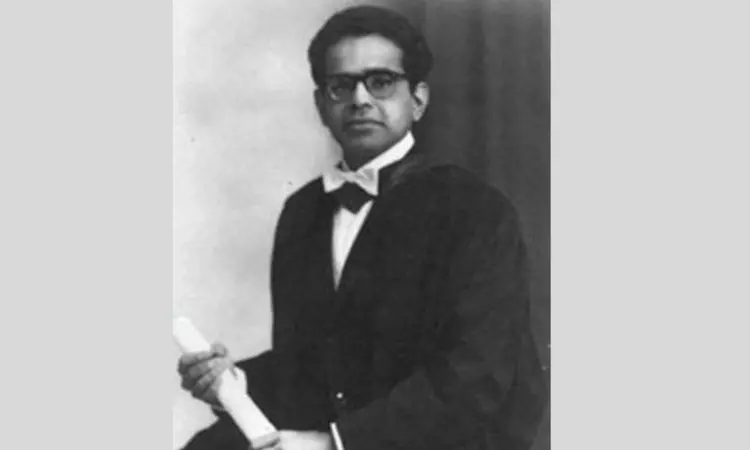- Home
- Medical news & Guidelines
- Anesthesiology
- Cardiology and CTVS
- Critical Care
- Dentistry
- Dermatology
- Diabetes and Endocrinology
- ENT
- Gastroenterology
- Medicine
- Nephrology
- Neurology
- Obstretics-Gynaecology
- Oncology
- Ophthalmology
- Orthopaedics
- Pediatrics-Neonatology
- Psychiatry
- Pulmonology
- Radiology
- Surgery
- Urology
- Laboratory Medicine
- Diet
- Nursing
- Paramedical
- Physiotherapy
- Health news
- Fact Check
- Bone Health Fact Check
- Brain Health Fact Check
- Cancer Related Fact Check
- Child Care Fact Check
- Dental and oral health fact check
- Diabetes and metabolic health fact check
- Diet and Nutrition Fact Check
- Eye and ENT Care Fact Check
- Fitness fact check
- Gut health fact check
- Heart health fact check
- Kidney health fact check
- Medical education fact check
- Men's health fact check
- Respiratory fact check
- Skin and hair care fact check
- Vaccine and Immunization fact check
- Women's health fact check
- AYUSH
- State News
- Andaman and Nicobar Islands
- Andhra Pradesh
- Arunachal Pradesh
- Assam
- Bihar
- Chandigarh
- Chattisgarh
- Dadra and Nagar Haveli
- Daman and Diu
- Delhi
- Goa
- Gujarat
- Haryana
- Himachal Pradesh
- Jammu & Kashmir
- Jharkhand
- Karnataka
- Kerala
- Ladakh
- Lakshadweep
- Madhya Pradesh
- Maharashtra
- Manipur
- Meghalaya
- Mizoram
- Nagaland
- Odisha
- Puducherry
- Punjab
- Rajasthan
- Sikkim
- Tamil Nadu
- Telangana
- Tripura
- Uttar Pradesh
- Uttrakhand
- West Bengal
- Medical Education
- Industry
Story of Prof Subhash Mukhopadhyay, man behind first Indian life outside the womb

Kolkata: The story of Prof Subhash Mukhopadhyay, who was one of the contributors behind the first Indian life outside the womb was that of courage, sacrifice and dedication.
In 1978, two miracle babies, Louise Brown and Durga, came into existence with the help of the new medical technology called in vitro fertilization (IVF), commonly known as test tube babies.
One of the doctors who made the miracle possible was Prof Robert G Edwards, who made the birth of Louise Brown possible. He became famous for his unconventional modern technology, and he established the world’s first clinic for IVF therapy at Cambridge. He was awarded the Nobel Prize in Medicine in 2010. However, the other doctor Prof Subhash Mukhopadhyay who also introduced IVF and gave birth to Durga had to suffer as his work was not given due importance by the then government.
His work was mocked by the authorities, and he was shunned, which caused him to take his own life. His terrible life story served as the basis for the 1982 Ramapada Chowdhury novel Abhi manyu and the well-known Hindi film Ek Doctor Ki Maut (1990).
After completing his MBBS from Calcutta National Medical College, he worked as a Lecturer, Reader and Professor of Physiology at NRS Medical College, Kolkata from 1967 to 1975. He created history when working with Sunit Mukherji, a Cryobiologist and Gynecologist Dr. Saroj Kanti Bhattacharya. He became the first physician in India to perform in vitro fertilisation resulting in a test tube baby "Durga" (alias Kanupriya Agarwal) on 3 October 1978.
Facing social ostracisation, bureaucratic negligence, reprimand and insult instead of recognition from the West Bengal State government and refusal of the Government of India to allow him to attend international conferences, the doctor committed suicide after an examining committee ridiculed his work and humiliated him. He committed suicide in his Calcutta residence on 19 June 1981.
On T.C. Anand Kumar's initiative, Mukhopadhyay was mentioned as the architect of the first Indian test tube baby in a document related to the subject of artificial intercourse in ICMR. Mukhopadhyay was an excellent doctor, a visionary who fought to open new dimensions in medical science. His legacy must be cherished and followed by generations of medical professionals all over the country.
Sanchari Chattopadhyay has pursued her M.A in English and Culture Studies from the University of Burdwan, West Bengal. She likes observing cultural specificities and exploring new places.


